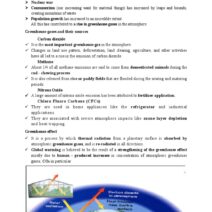The dingo, an emblematic wild canine of Australia, is emblematic of the broader struggles faced by wildlife amid the insidious advance of climate change. As temperatures steadily rise and ecosystems morph under the pressure of anthropogenic alterations, the dingo confronts a multifaceted dilemma. This narrative explores the complex interplay of climate dynamics, habitat degradation, and the unique characteristics of this iconic species. The tale of the dingo serves as a poignant allegory for the myriad forms of wildlife grappling with an increasingly hostile environment.
To comprehend the dingo’s plight, one must first understand its ecological niche. This apex predator has evolved to thrive in diverse habitats, ranging from arid deserts to verdant coastal woodlands. Renowned for their adaptability, dingoes play a pivotal role in maintaining the ecological balance. However, the warming planet challenges their adaptability, fundamentally altering their food sources and habitats in unpredictable ways. Increasing temperatures can disrupt the delicate balance of ecosystems, leading to a cascade of consequences for species reliant on these interdependent systems.
As climate change escalates, the dingo’s prey faces its own pernicious struggle. Melting ice grips some regions while others encounter droughts, creating a ripple effect that diminishes food availability. The dingo’s traditional prey—kangaroos, wallabies, and small mammals—exhibits altered migration patterns and declining populations as habitats become inhospitable. As food sources dwindle, dingoes may resort to scavenging and competing with other predators, including domestic animals, aggravating human-wildlife conflict.
This dynamic transpires against a backdrop of an Australian landscape simultaneously mesmerising and merciless. The sun-drenched plains and rugged terrains that defined dingo territory are metamorphosing, becoming increasingly susceptible to bushfires. These calamitous events, exacerbated by rising temperatures and prolonged drought, decimate habitats and destabilize the existing ecological order. The dingo finds itself caught in a tempest, with flames devouring its sanctuary and driving out its prey.
The dingo’s resilience is noteworthy, yet it hinges on the intricate web of biodiversity. Each ecosystem functions as a symphony, where every instrument is essential for harmony. With the rapid progression of climate change, instruments begin to fall silent, leading to a discordant landscape—one where the dingo’s survival becomes precarious. As Australia’s unique biodiversity faces potential collapse, species extinction looms ominously on the horizon.
Intriguingly, the dingo embodies both a challenge and a glimmer of hope. Its social structure, marked by pack dynamics, illustrates the significance of collaboration in overcoming adversity. Dingoes hunt, raise pups, and defend territories as a cohesive unit. This social resilience echoes the broader narrative of our existence; as humankind grapples with the consequences of our actions, the call for collective efforts to combat climate change resounds louder than ever. The destiny of wildlife is intrinsically intertwined with our own; we must evolve our approaches to stewardship, acknowledging the reciprocal relationship existing between humans and the natural world.
Moreover, the dingo’s adaptability could serve as an unexpected teacher in our quest for coexistence with nature. The species has demonstrated remarkable survival skills, adjusting its diet and behaviors in response to environmental shifts. Learning from the dingo means recognizing the imperative for a flexible and innovative approach to wildlife conservation amidst climatic uncertainty. Adaptive management strategies could facilitate the preservation of habitats while considering the ecological roles of apex predators like the dingo. By prioritizing nuanced conservation efforts tailored to the specific needs of various species, we can help mitigate the impacts of climate change and support biodiversity.
In urbanisation, the dingo’s tale becomes one of stark contrasts. As cities expand, encroaching upon the territories of wildlife, the once-untamed landscapes transform into fragmented patches of habitat. The psychological toll on the dingo, much like the plight of countless species, multiplies; lost territories fragment identities and eliminate pathways for migration and genetic diversity. Such estrangement puts the species on a precarious precipice, accentuating the need for conscientious urban planning that respects and integrates wildlife habitats.
As we advance deeper into the 21st century, the urgency of this narrative cannot be understated. The dingo’s dilemma is emblematic of the broader environmental crisis—a clarion call to reflect upon our relationship with the natural world. It compels us to reconsider our actions, catalysing transformative change. Through sustainable practices, reforestation efforts, and inclusive conservation strategies, we can foster resilience in wildlife while simultaneously curtailing our carbon footprint. The essence of coexistence lies in understanding that our destinies are inexorably linked to the health of our planet.
In conclusion, the dingo stands as both a mirror reflecting the trials faced by wildlife in a warming world and a beacon illuminating pathways toward coexistence. This poignant metaphor encapsulates the nuanced realities of environmental imperatives. The dingo’s survival becomes a symbol of hope, resilience, and the collective responsibility to cultivate a harmonious relationship with nature. As stewards of the Earth, our actions can carve out a more sustainable future; for it is through the preservation of the dingo and its kindred spirits that we secure the legacy of biodiversity for generations to come.






